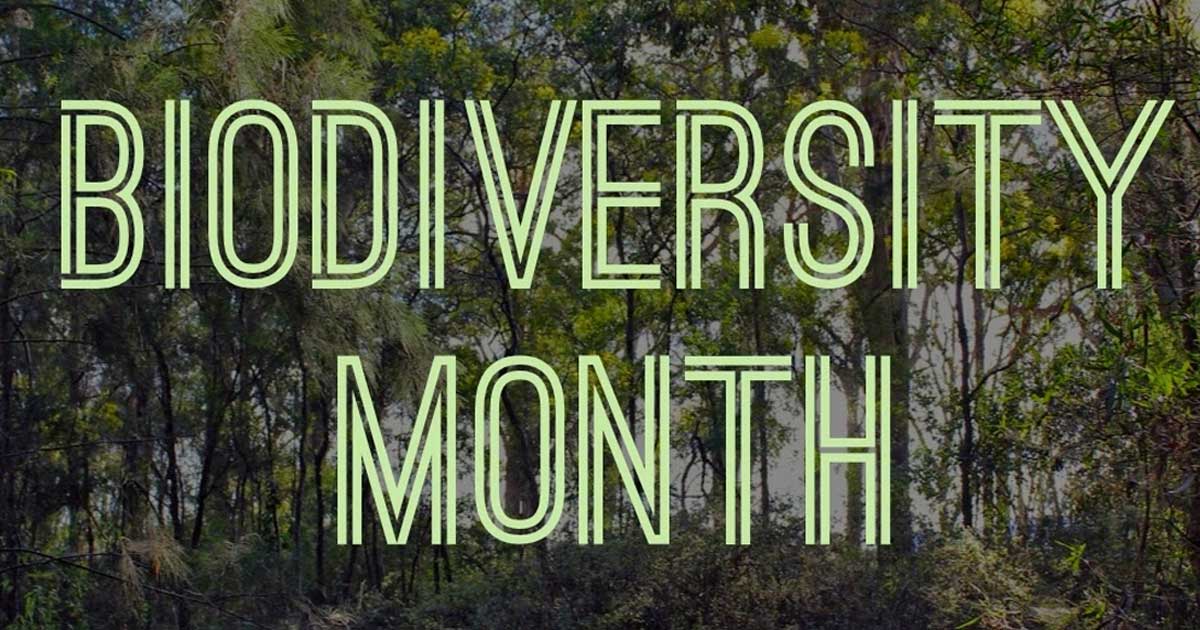Biodiversity Month is held in September each year and aims to promote the importance of protecting, conserving and improving biodiversity both within Australia and across the world.
The Australian Government through the Department is committed to protecting Australia’s unique biodiversity.
Most of our broad range of programs and initiatives aim to ensure our important environments and habitats are preserved for future generations of Australians to appreciate and enjoy.
What is biodiversity?
Biodiversity has been described as the ‘web of life’, ‘the variety of living things’ or ‘the different plants, animals and micro-organisms, their genes and ecosystems of which they are a part’.
Biodiversity encompasses every living thing that exists on our planet and the environment in which they live. From the smallest one-cell microbe to the enormous majesty of the blue whale. From the depths of the Pacific Ocean to peaks of our tallest mountains, biodiversity forms part of an intricate and interdependent web of life in which we are all a part.
Australia is home to between 600,000 and 700,000 species, many of which are found nowhere else in the world. About 84 per cent of our plants, 83 per cent of our mammals, and 45 per cent of our birds are endemic — that is, they are only found in Australia.
The marine environment is home to thousands of marine species, some of which are unique to Australia and all of which contribute to making Australia the most biodiversity-rich developed country in the world. This includes at least 45 species of whales, dolphins and porpoises.
Why is biodiversity important?
Human beings depend for their sustenance, health, well-being and enjoyment of life on biodiversity. We derive all of our food and many medicines and industrial products from the wild and domesticated components of biological diversity. Biodiversity is the basis for much of our recreation and tourism, and includes the ecosystems which provide us with many services such as clean water.
How can I help protect biodiversity?
There are a number of ways individuals and communities can help protect biodiversity in their local area.
- Create a natural habitat in your backyard. Look at plants that are native to your region and help create a backyard sanctuary for local birds and wildlife.
- Get rid of weeds. What seems like a perfectly harmless plant can turn into a noxious weed if it jumps your back fence and heads into bushland. Check out what’s considered a weed in your part of the country at Weeds in Australia (http://www.environment.gov.au/biodiversity/invasive/weeds/
- Be a responsible pet owner. If you can no longer keep your pet do not release it into the wild. This includes pet fish — do not flush them down the toilet or put them into local streams. Make sure your cat is de-sexed and either keep it indoors or invest in an outdoor cat run — domestic cats can have a devastating effect on local wildlife.
- Reduce, reuse and recycle. Look at ways to reduce the amount of rubbish that ends up in landfill and the waterways. Many things can now be recycled. For more information on what you can recycle in your local area go to Recycling Near You (link is external)or Waste and recycling
- Start your own compost bin. Organic matter like vegetable peelings which usually ends up landfill is great for your garden. Start composting and you can reduce the need for chemicals and fertilizers in the garden and improve the health of your soil.
- Only put water down the drains. Things like oils and chemicals may start at the kitchen sink but end up in our waterways and seas and can affect animals and plants living in streams and rivers. Instead of using commercial cleaning chemicals try using white vinegar and bicarbonate of soda.
- Be an informed seafood eater. Don’t eat threatened fish species. To find out what species you should avoid at the fish market go to Find a Fish — (www.FishNames.com.au)
- Understand what you can and can’t take with you when you travel. Some tourist souvenirs and items you buy over the internet are made from or contain derivatives of plants and animals. If you are bringing plants or animals into or out of Australia, go to Information for travellers and online shoppers
- When you’re sailing, don’t get too close to whales and dolphins. Worldwide, whales, dolphins and porpoises face many threats, from being directly hunted to being caught in fishing nets. Ship strike, pollution, climate change, ocean noise, tourism, discarded fishing gear or other rubbish may also affect the population. They can also be loved to death by overenthusiastic whale watchers.
What is the Australian Government doing to protect biodiversity?
The Australian Government’s national environment law, the Environment Protection and Biodiversity Conservation Act 1999, promotes the conservation of biodiversity by providing strong protection for threatened species and ecological communities, migratory, marine and other protected species.
The Australian Government has recognised the role of biodiversity in tackling climate change, and the need to make it central to climate change policies affecting land management. The Government’s Clean Energy Future package includes funding to complement and build upon the Australian Government’s existing natural resource management activities.
The Australian Government is looking at biodiversity from a number of angles. From research through to wildlife corridors, there are a range of programs aimed at protecting Australia’s unique biodiversity.
Learn More
To learn more about Biodiversity in Australia and the governments plans CLICK HERE >

